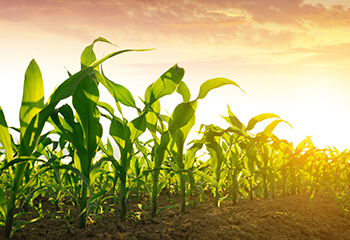Higher yields mean higher nutrient removal
Oct 26, 2020

The USDA’s National Agricultural Statistics Service predicts this year’s harvest will bring in record-setting yields for Tennessee corn and soybean producers. However, with those above-average yields come above-average nutrient removal from soils.
As an example, a corn crop harvested for grain removes .38 pounds of phosphorous (P) and .27 pounds of potassium (K) for each bushel. In a 200-bushel harvest, that equates to 76 pounds of P and 54 pounds of K being removed from the field. Soybeans remove .84 pounds of P and 1.3 pounds of K for each bushel harvested. So, for a 50-bushel soybean crop, 42 pounds of P and 65 pounds of K are removed. Note that soybeans actually remove more potassium per bushel than corn does. Keep in mind that nutrient removal will vary up or down depending on specific field and crop parameters.
After harvest is a great time to consider soil testing. It’s the only true way to get an accurate reading of soil nutrient levels. There is no better, more cost-effective farm management practice than soil testing. It gives both grower and retailer a scientific-based start to planning an efficient, effective soil fertility program. By understanding your crop nutrient status, you can better determine how much P, K, and lime should be applied this fall to prepare for a successful crop next year.
Make the most of your sampling efforts with the following tips.
Develop a sampling plan.
Start by deciding what your yield goals are based on what you know about each field. Make sure you’re taking enough samples to account for field variability. The more data you have, the more informed your decision-making will be.
Account for field variability.
Use ag technology like WinField United’s R7® Tool to help you identify management zones for sampling from satellite images (including yield maps and field variability maps). This tool can use those images to generate a satellite-derived management zone (SaMZ™) map that indicates variations in production potential.
Let Co-op collect your samples.
Most Co-ops offer soil sampling services. Contact your local store for more details.
Interpret the data.
You can depend on your local Co-op when you receive your results, too. These trusted agronomists have the expertise to help you interpret the data, identify zones for variable-rate options, and offer fertility advice in preparation for next season.
File for easy access next season.
Soil sampling is also a valuable tool for in-season decisions. Comparing soil samples with plant tissue samples can indicate how efficiently plants are taking up nutrients. This helps you identify agronomic challenges your crop may be facing and can help focus in-season nutrient amendments.
As an example, a corn crop harvested for grain removes .38 pounds of phosphorous (P) and .27 pounds of potassium (K) for each bushel. In a 200-bushel harvest, that equates to 76 pounds of P and 54 pounds of K being removed from the field. Soybeans remove .84 pounds of P and 1.3 pounds of K for each bushel harvested. So, for a 50-bushel soybean crop, 42 pounds of P and 65 pounds of K are removed. Note that soybeans actually remove more potassium per bushel than corn does. Keep in mind that nutrient removal will vary up or down depending on specific field and crop parameters.
After harvest is a great time to consider soil testing. It’s the only true way to get an accurate reading of soil nutrient levels. There is no better, more cost-effective farm management practice than soil testing. It gives both grower and retailer a scientific-based start to planning an efficient, effective soil fertility program. By understanding your crop nutrient status, you can better determine how much P, K, and lime should be applied this fall to prepare for a successful crop next year.
Make the most of your sampling efforts with the following tips.
Develop a sampling plan.
Start by deciding what your yield goals are based on what you know about each field. Make sure you’re taking enough samples to account for field variability. The more data you have, the more informed your decision-making will be.
Account for field variability.
Use ag technology like WinField United’s R7® Tool to help you identify management zones for sampling from satellite images (including yield maps and field variability maps). This tool can use those images to generate a satellite-derived management zone (SaMZ™) map that indicates variations in production potential.
Let Co-op collect your samples.
Most Co-ops offer soil sampling services. Contact your local store for more details.
Interpret the data.
You can depend on your local Co-op when you receive your results, too. These trusted agronomists have the expertise to help you interpret the data, identify zones for variable-rate options, and offer fertility advice in preparation for next season.
File for easy access next season.
Soil sampling is also a valuable tool for in-season decisions. Comparing soil samples with plant tissue samples can indicate how efficiently plants are taking up nutrients. This helps you identify agronomic challenges your crop may be facing and can help focus in-season nutrient amendments.